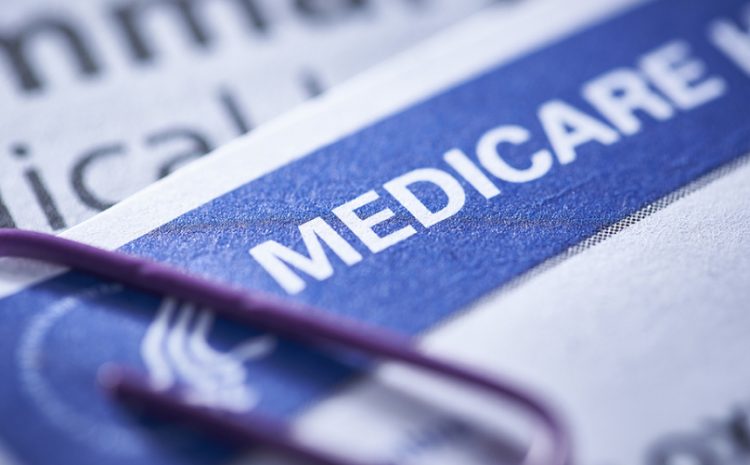

Principal writer, insurance and medicare advisory
MedicarePal principal writer Derick Dolivo covers Medicare. Smith believes in the power of education to help individuals make smart financial decis
- Written on August 10, 2025
- Updated August 17, 2025
At MedicarePal we strive to help you make smarter financial decisions. While we adhere to strict
Key Principles
We value your trust. Our mission is to provide readers with accurate and unbiased information, and we have editorial standards in place to ensure that happens. Our editors and reporters thoroughly fact-check editorial content to ensure the information you’re reading is accurate. We maintain a firewall between our advertisers and our editorial team. Our editorial team does not receive direct compensation from our advertisers.
MedicarePal follows a strict editorial policy, so you can trust that our content is honest and accurate. Our award-winning editors and reporters create honest and accurate content to help you make the right financial decisions. The content created by our editorial staff is objective, factual, and not influenced by our advertisers.
We’re transparent about how we are able to bring quality content, competitive rates, and useful tools to you by explaining how we make money.
Medicarepal is an independent, advertising-supported publisher and comparison service. We are compensated in exchange for placement of sponsored products and, services, or by you clicking on certain links posted on our site. Therefore, this compensation may impact how, where and in what order products appear within listing categories, except where prohibited by law for our mortgage, home equity and other home lending products. Other factors, such as our own proprietary website rules and whether a product is offered in your area or at your self-selected credit score range can also impact how and where products appear on this site. While we strive to provide a wide range offers, Bankrate does not include information about every financial or credit product or service.
The concept of a Disability Giveback Program centers around providing financial relief and additional support to individuals who are living with disabilities. This concept, while not a formal program under this name, encompasses various initiatives and benefits that aim to give back to the disability community, either through government schemes, private insurance plans, or charitable organizations. This post delves into the multifaceted aspects of what could be considered under the umbrella of Disability Giveback Programs, including eligibility criteria, types of benefits, and how these programs aim to support individuals with disabilities.
Understanding Disability Giveback Programs
At its core, a Disability Giveback Program is designed to alleviate some of the financial pressures that come with living with a disability. These programs can take various forms, such as rebates, subsidies, enhanced insurance benefits, or direct financial assistance, and they aim to cover or reduce the costs associated with healthcare, living expenses, and accessibility needs.
The Importance of Disability Giveback Programs
Living with a disability can incur significant additional costs. From medical care and treatments to modifications needed in the home or for personal vehicles to assist with mobility, the financial burden can be substantial. Disability Giveback Programs recognize these challenges and seek to provide relief that can make a significant difference in the quality of life for individuals with disabilities.
Types of Disability Giveback Programs
- Government Initiatives: Many governments worldwide offer programs designed to support individuals with disabilities. These can include tax credits, disability benefits, healthcare subsidies, and programs aimed at increasing accessibility in public spaces.
- Private Insurance Plans: Some insurance companies offer enhanced benefits for individuals with disabilities, such as premium rebates or additional coverage for specific needs related to their disability.
- Charitable Organizations: Numerous non-profits and charities work to support individuals with disabilities through grants, direct financial assistance, or by providing services and equipment at no cost.
- Employer Programs: Some employers offer disability giveback programs as part of their benefits package, which might include flexible working arrangements, additional health insurance coverage, or financial assistance with accessibility needs.
Eligibility Criteria
Eligibility for Disability Giveback Programs varies widely depending on the specific program and its administering body. Generally, eligibility is based on the following criteria:
- Proof of Disability: Most programs require official documentation or certification of disability from a healthcare provider.
- Income Level: Some programs are designed to assist those below a certain income threshold.
- Residency: Many programs are restricted to residents of a specific area or country.
- Specific Needs: Some programs may only be available to individuals with certain types of disabilities or those requiring specific types of assistance.
Applying for Disability Giveback Programs
The application process for these programs can be complex and varies significantly between different initiatives. It generally involves:
- Gathering Documentation: Applicants will likely need to provide medical documentation of their disability, proof of income, and residency.
- Completing Applications: Filling out detailed application forms is usually the next step, which may be done online or in paper form.
- Follow-up Assessments: Some programs require assessments by professionals to determine eligibility and the level of support needed.
The Impact of Disability Giveback Programs
For those who qualify, the impact of Disability Giveback Programs can be profound. Financial support can ease the burden of medical bills, assistive technologies, and necessary home modifications, improving overall quality of life. Additionally, these programs can provide access to resources and support networks that might otherwise be out of reach.
Challenges and Considerations
Despite their benefits, Disability Giveback Programs are not without their challenges. Limited funding and strict eligibility criteria can make accessing these benefits difficult for many who need them. Additionally, the complexity of applying for and maintaining eligibility for these programs can be a significant barrier.
Advocacy and Future Directions
The future of Disability Giveback Programs lies in continued advocacy for more comprehensive support and easier access. By raising awareness of the needs of individuals with disabilities and the benefits of such programs, advocates can push for expanded eligibility, increased funding, and simplified application processes.
Disability Giveback Programs play a crucial role in supporting individuals with disabilities by providing financial relief and access to essential services. While navigating these programs can be complex, the potential benefits make exploring these options worthwhile for eligible individuals. As society continues to recognize the importance of supporting all its members, it is hoped that these programs will become more accessible and comprehensive, helping to ensure that individuals with disabilities can lead fulfilling, less financially burdensome lives.
Was this page helpful?
Medicare Pal adheres to stringent sourcing guidelines, prioritizing primary sources including medical organizations, government agencies, academic institutions, and scholarly journals with peer review. Discover the methods we use to guarantee the accuracy, comprehensiveness, and impartiality of our content in our editorial guidelines.

Do You Need Help With Medicare?
Call us Now 1-866-706-7293











